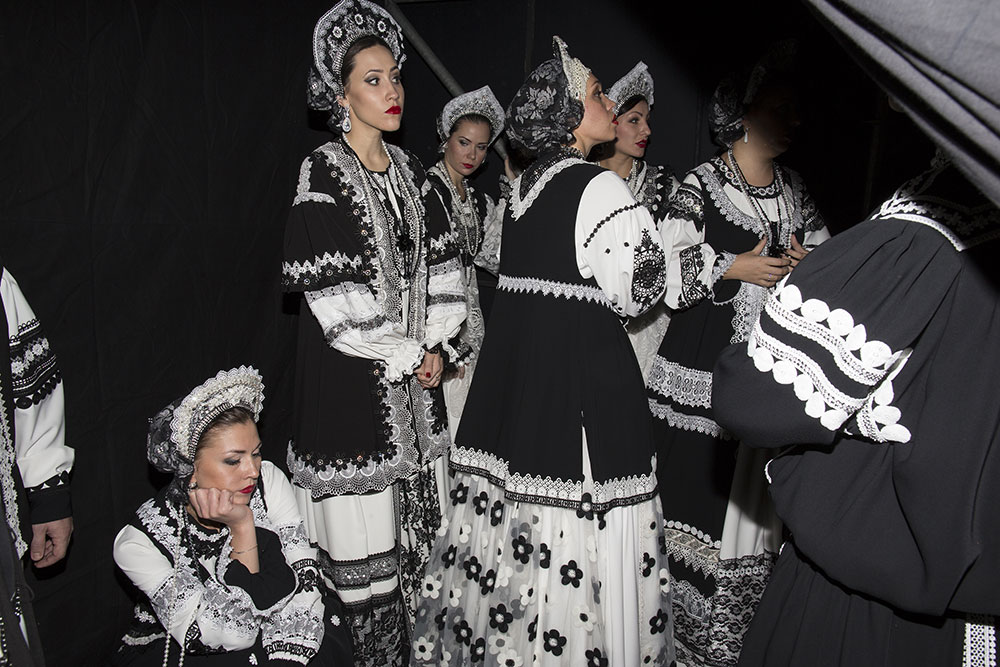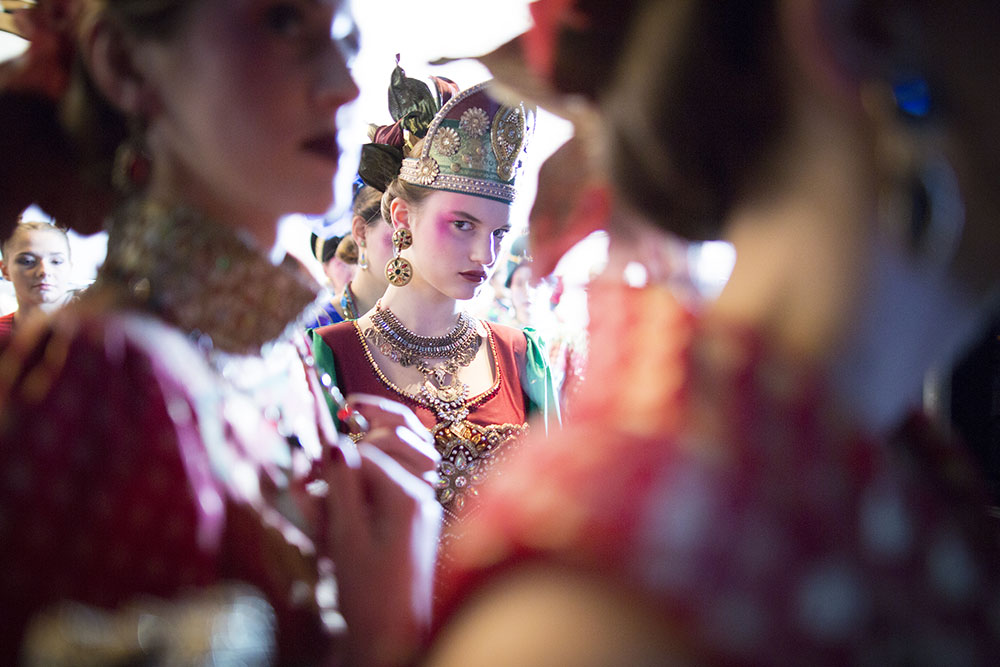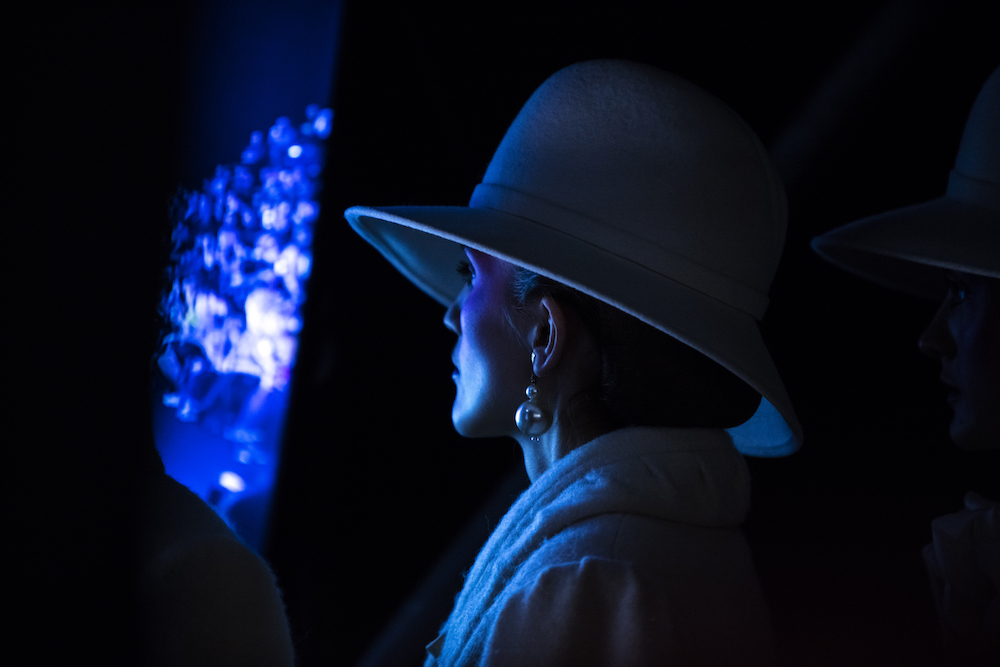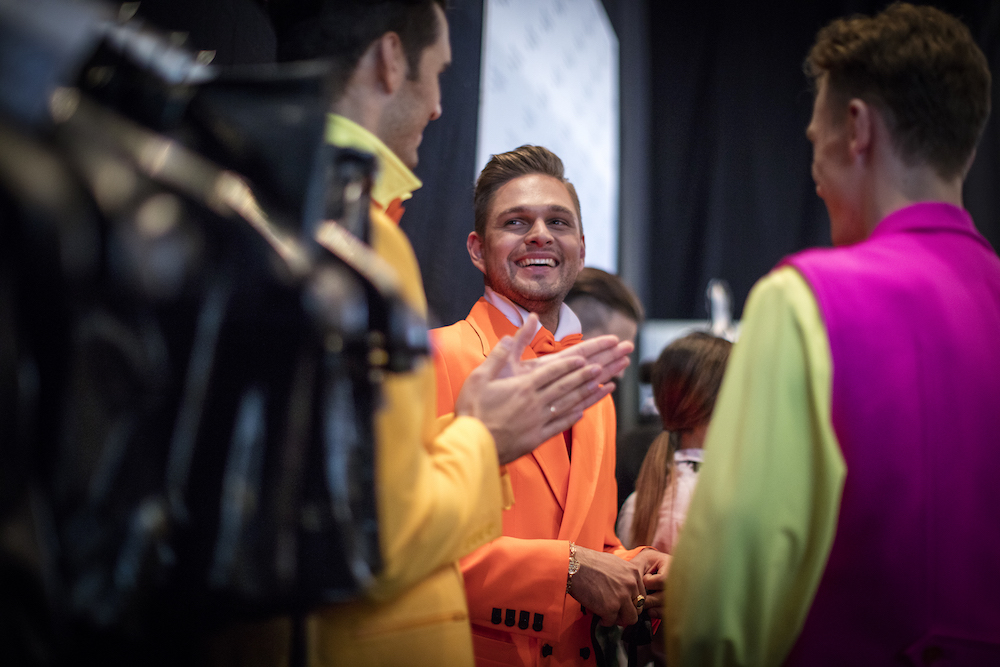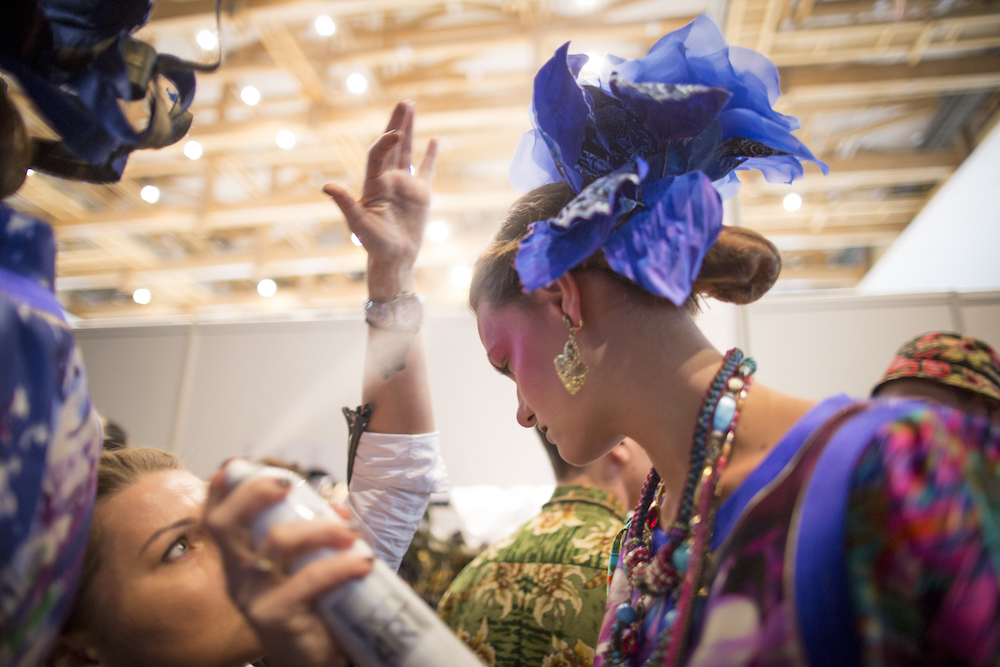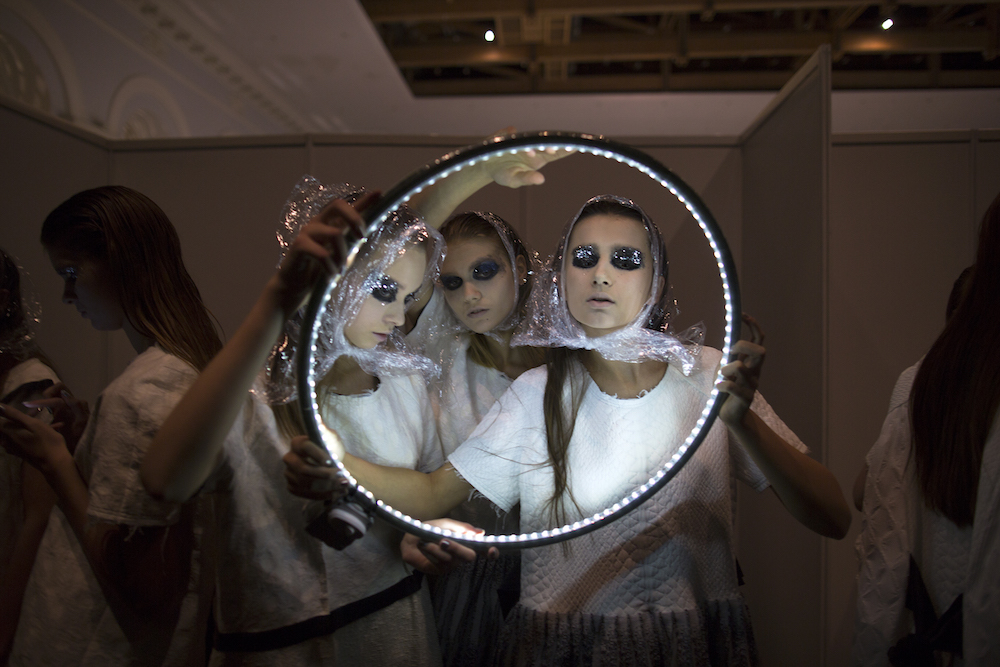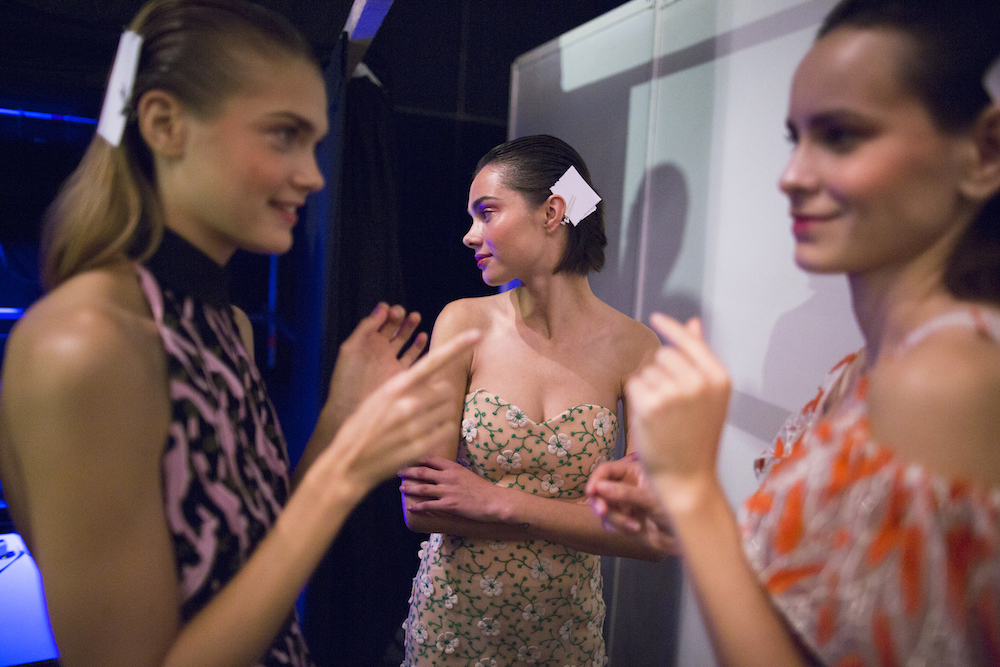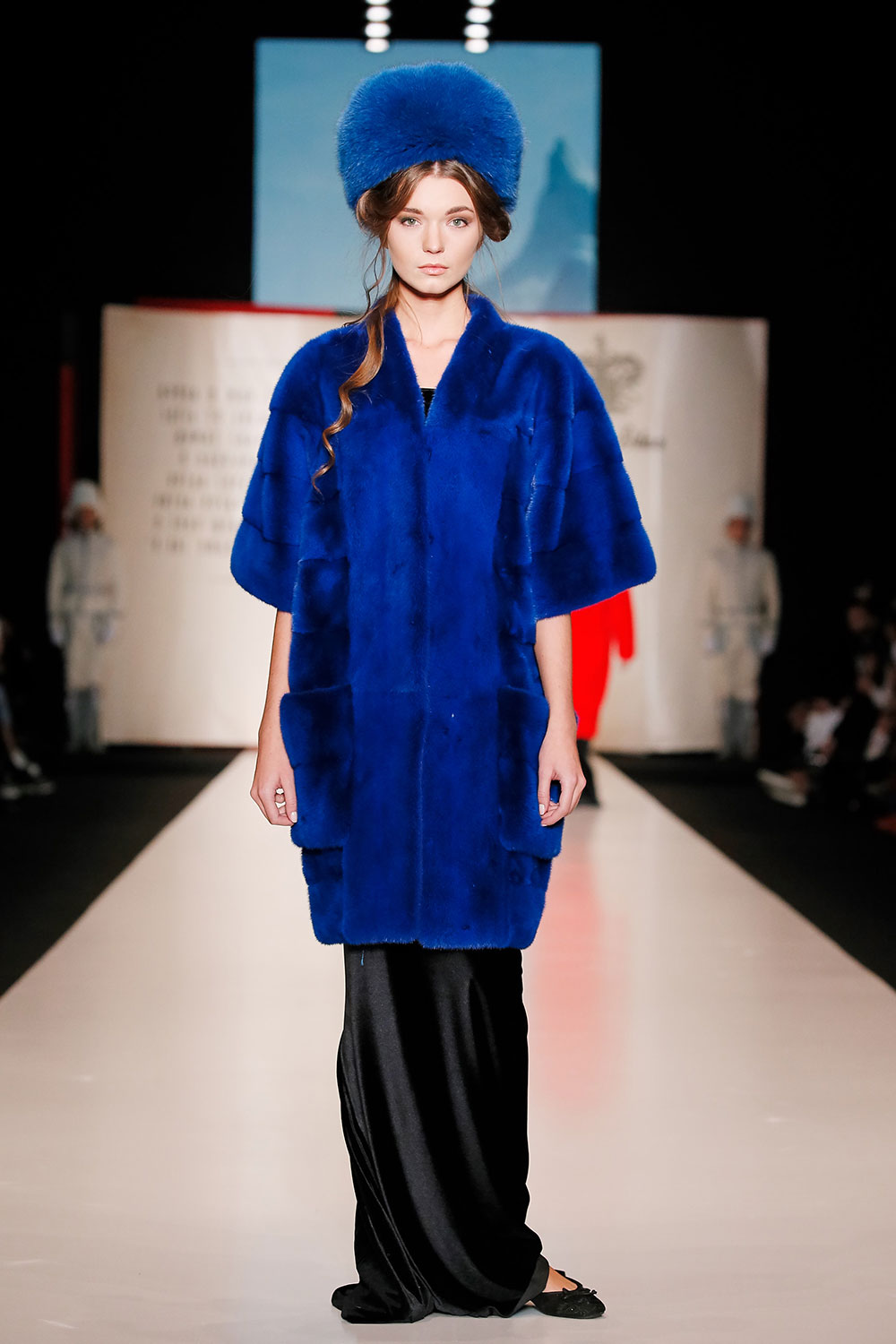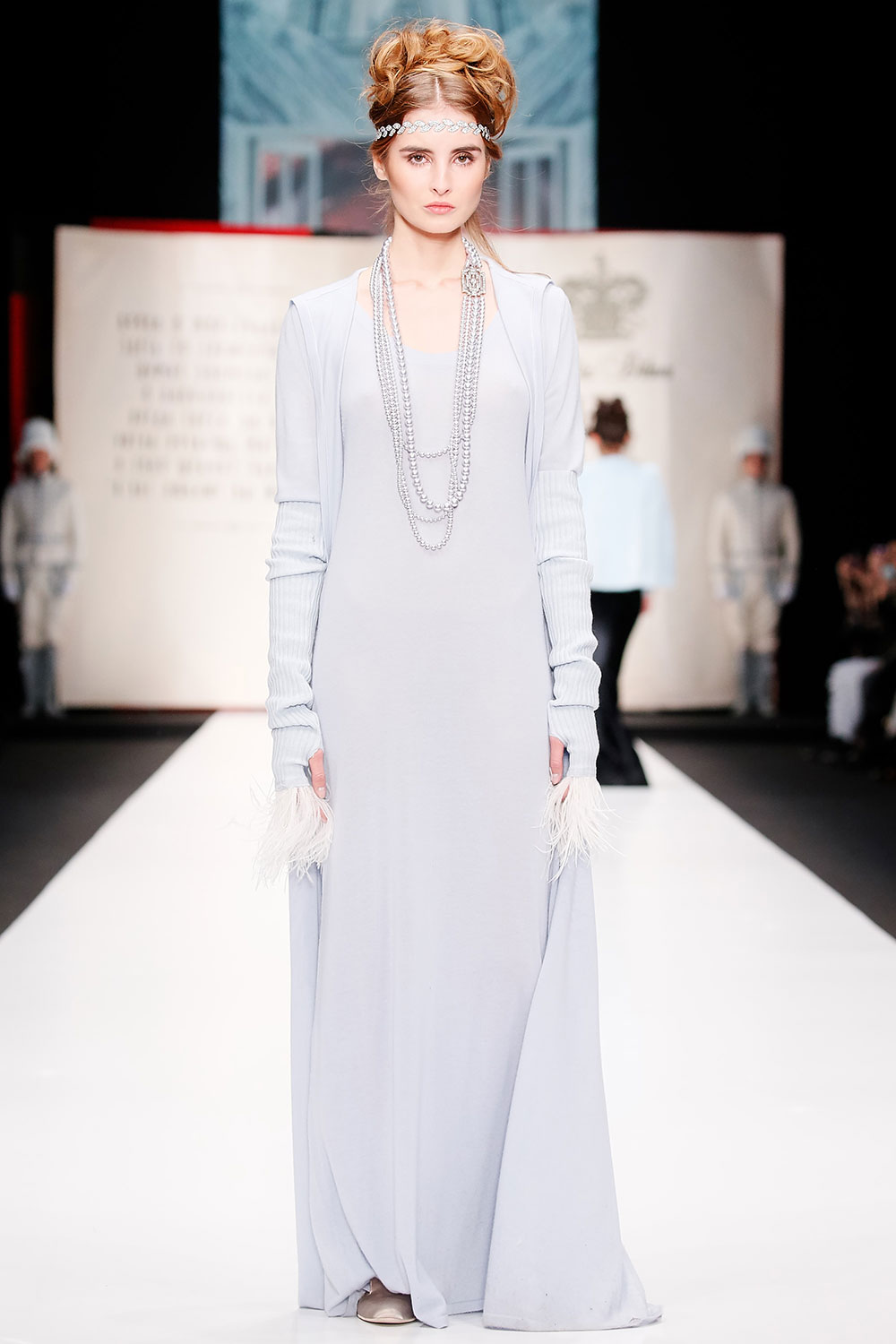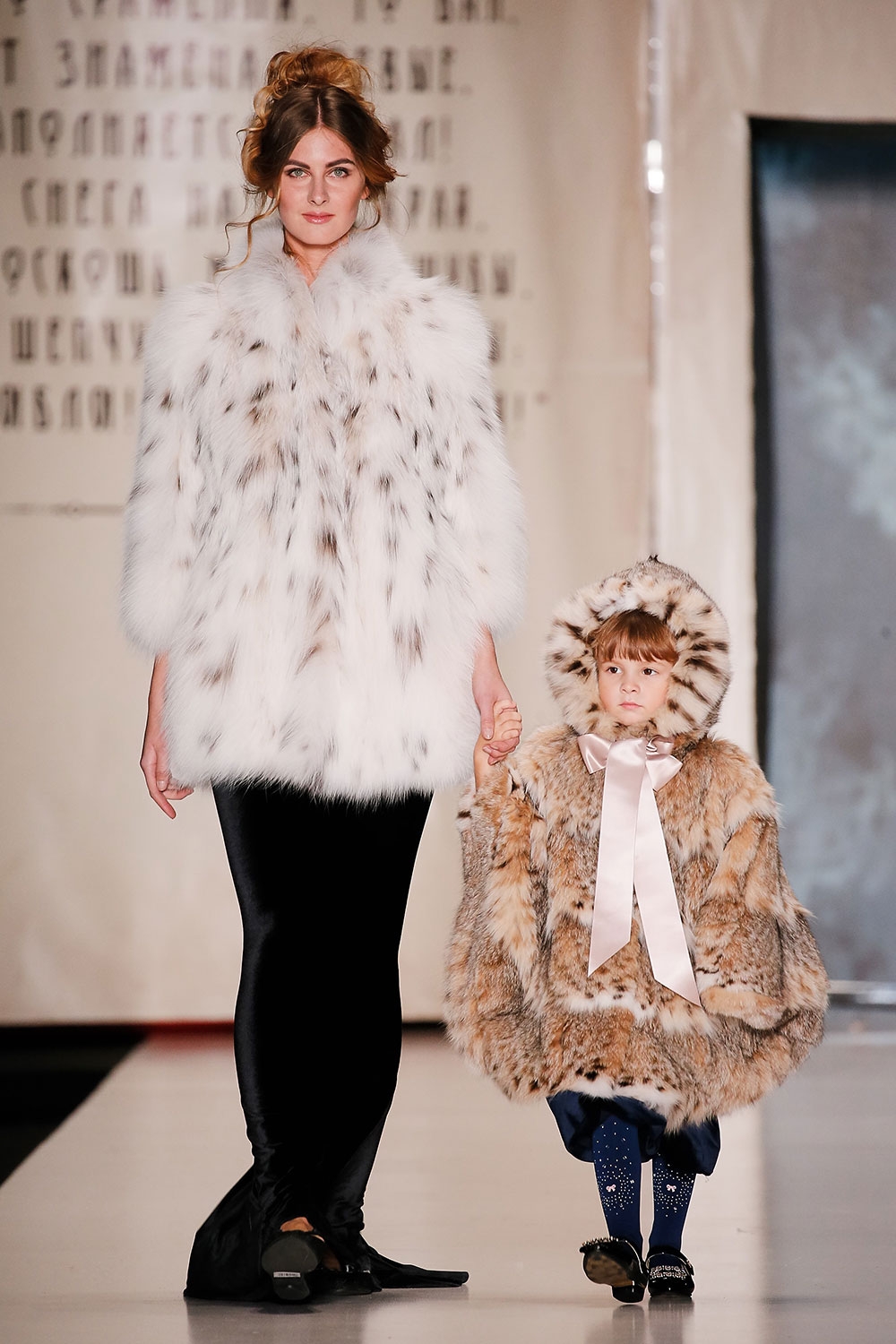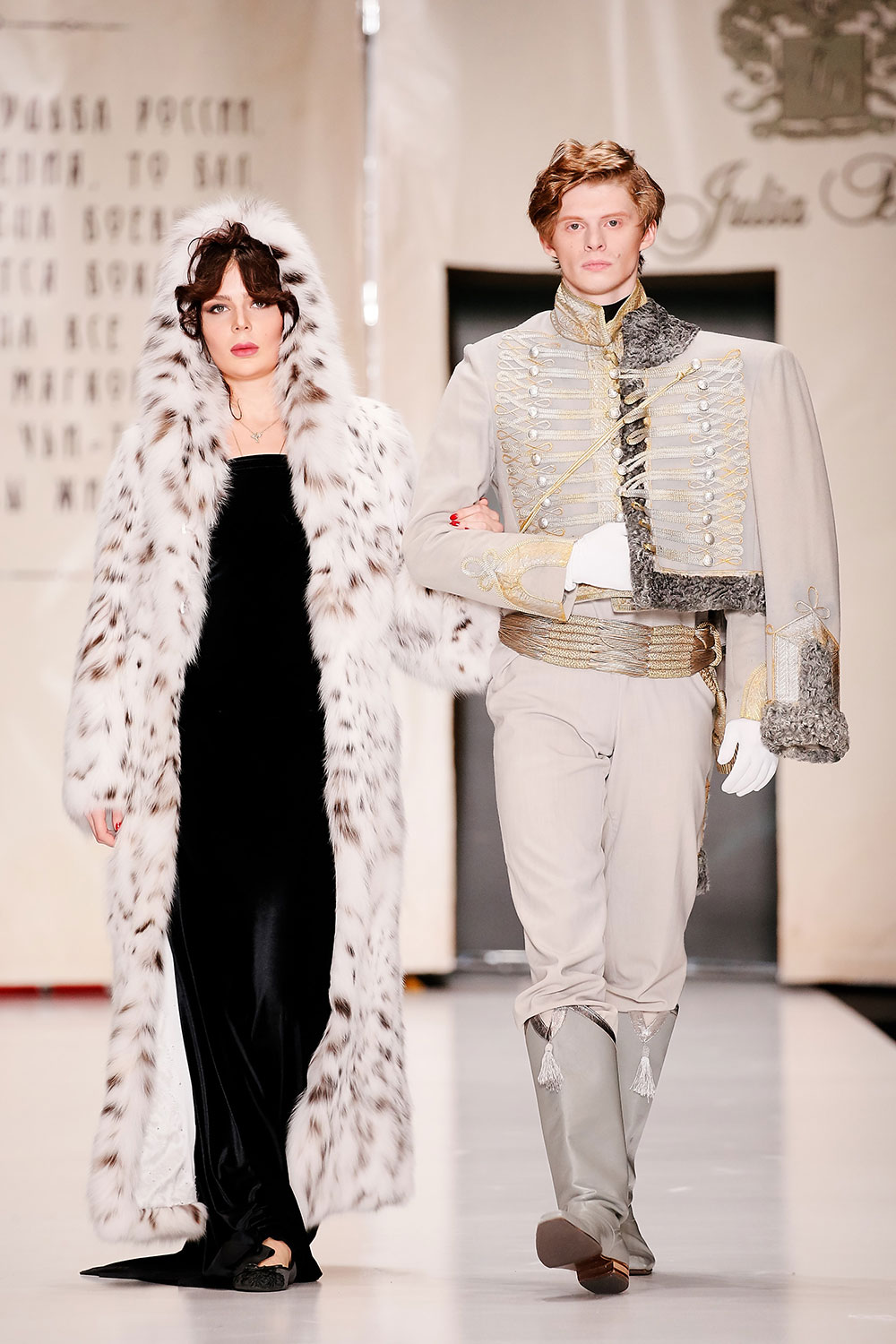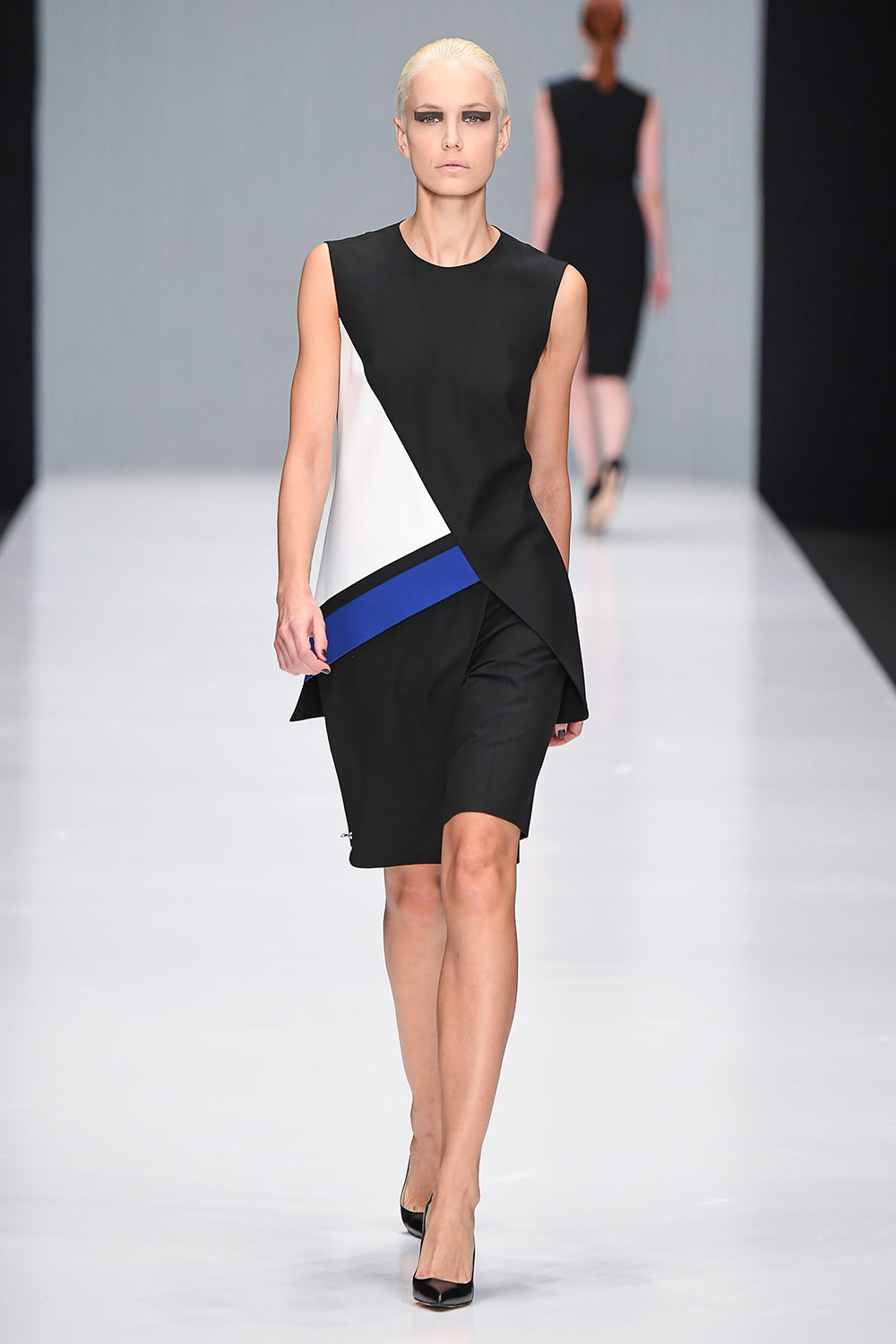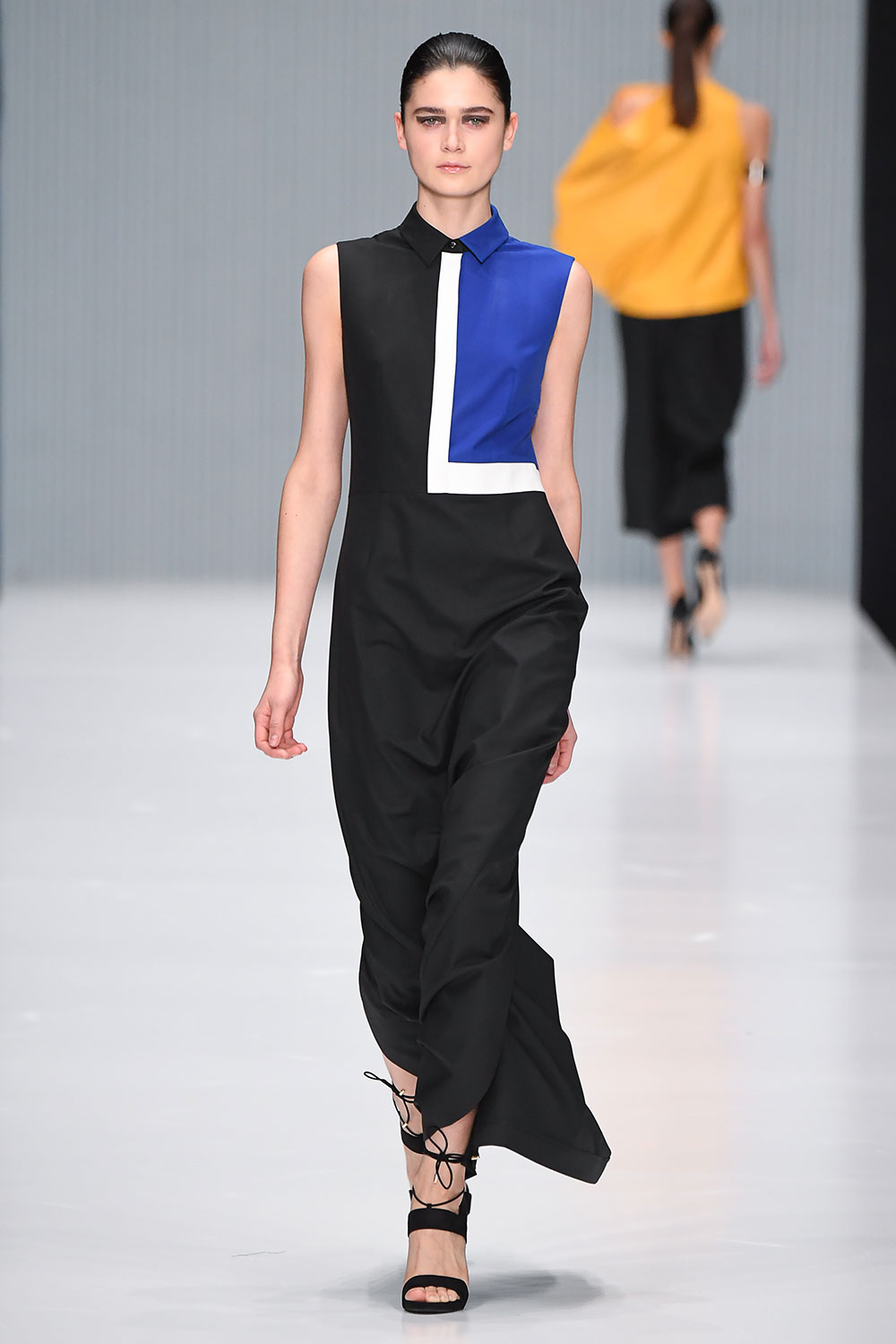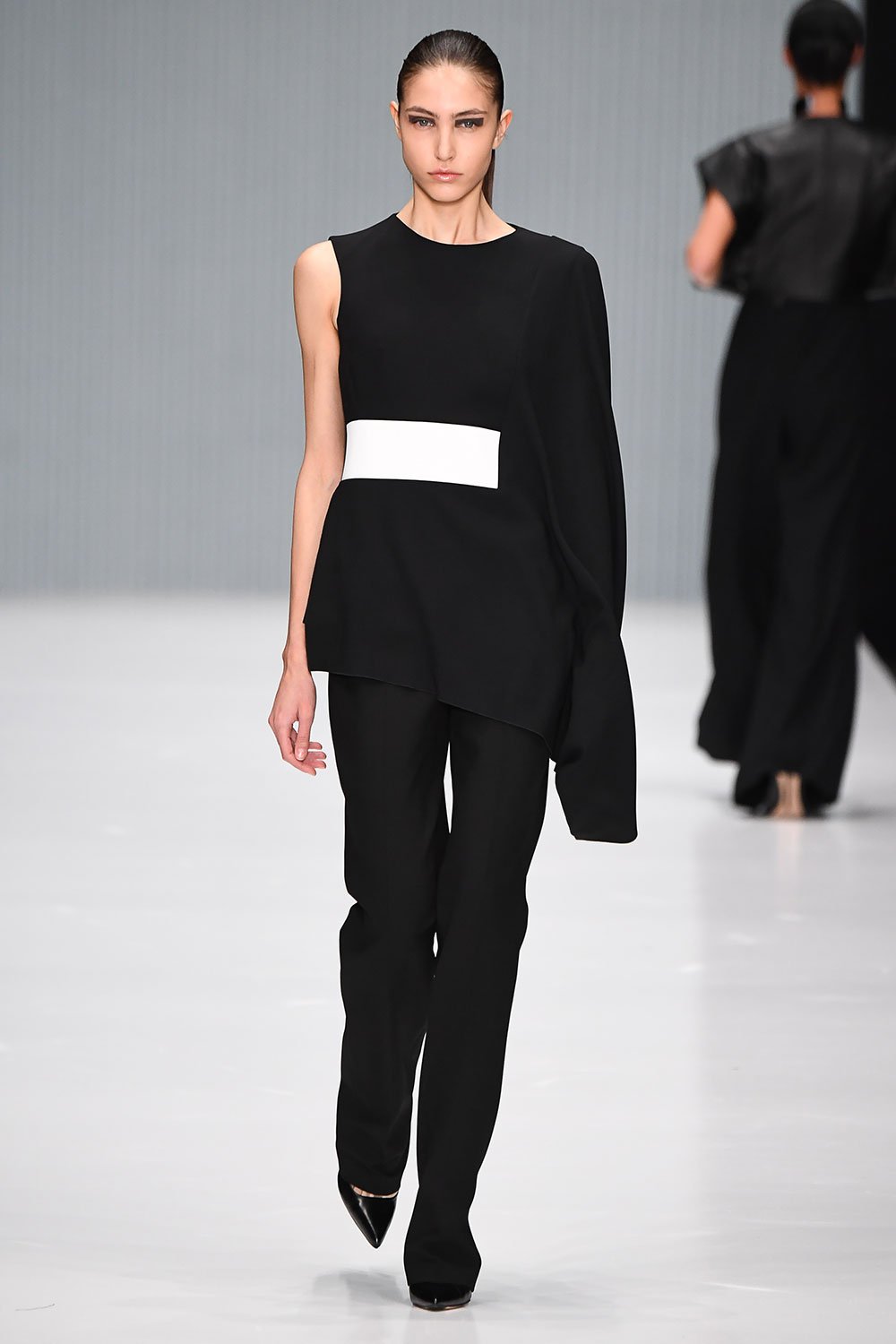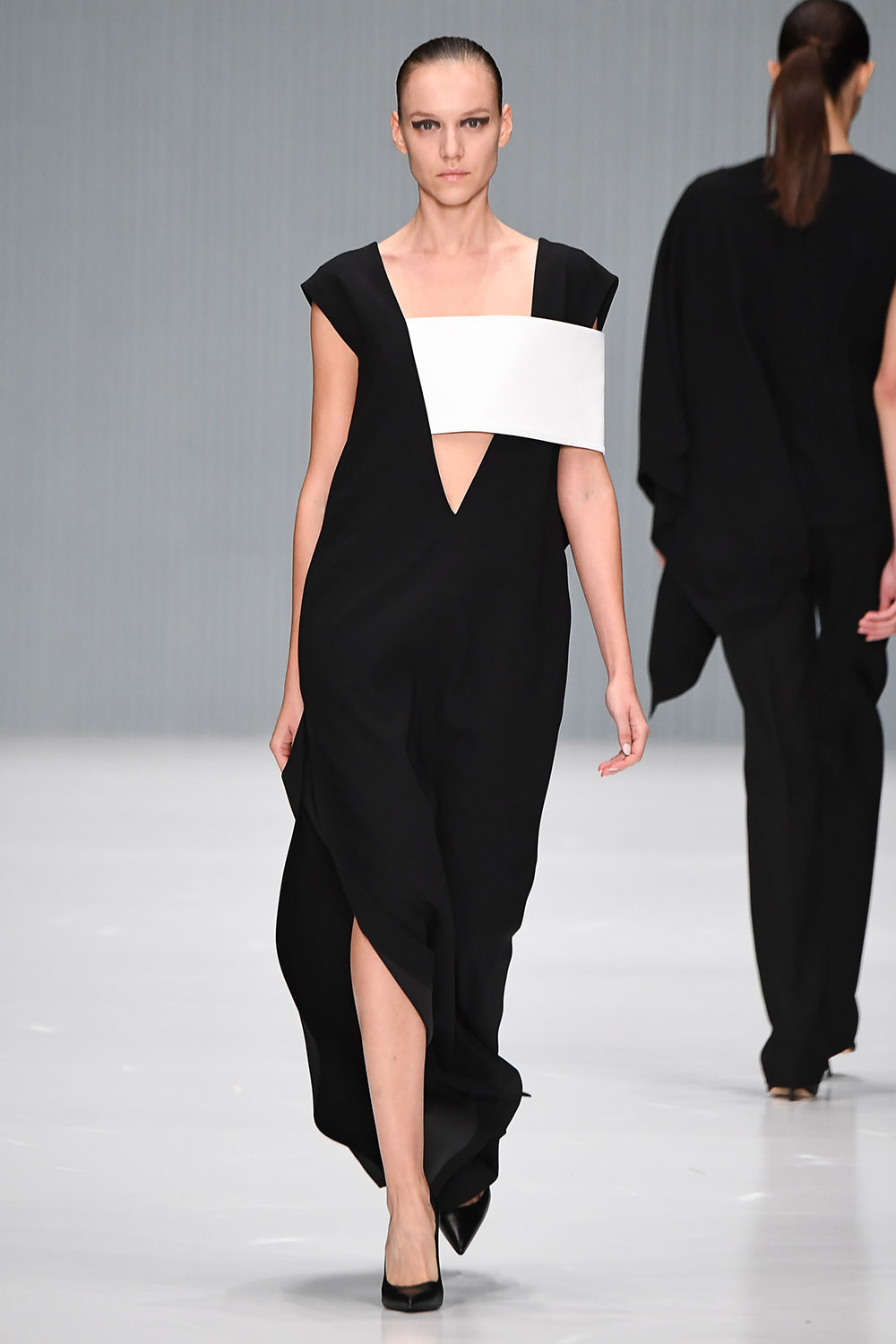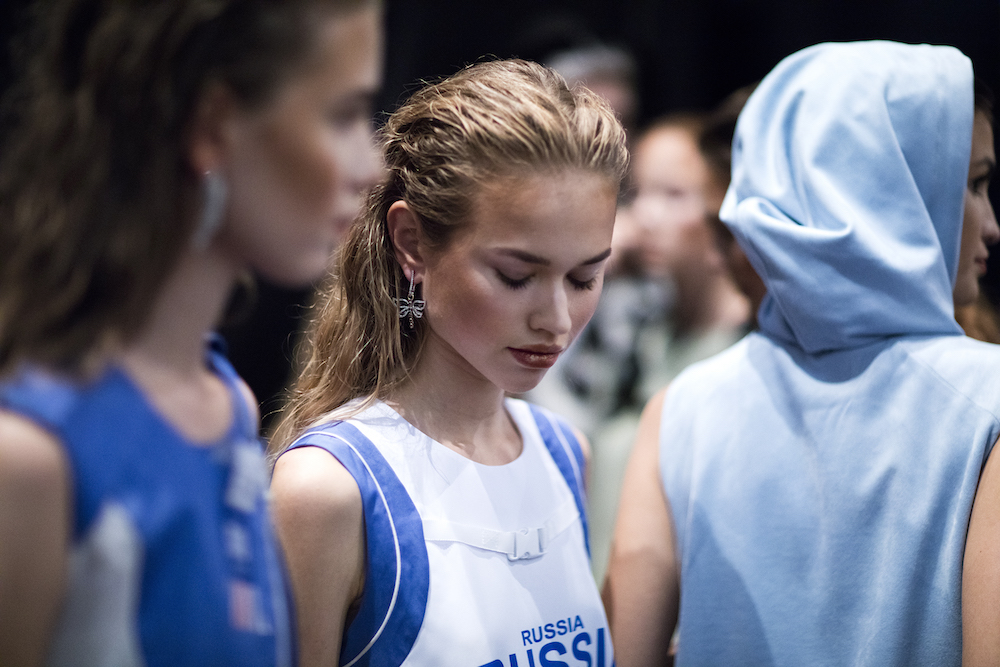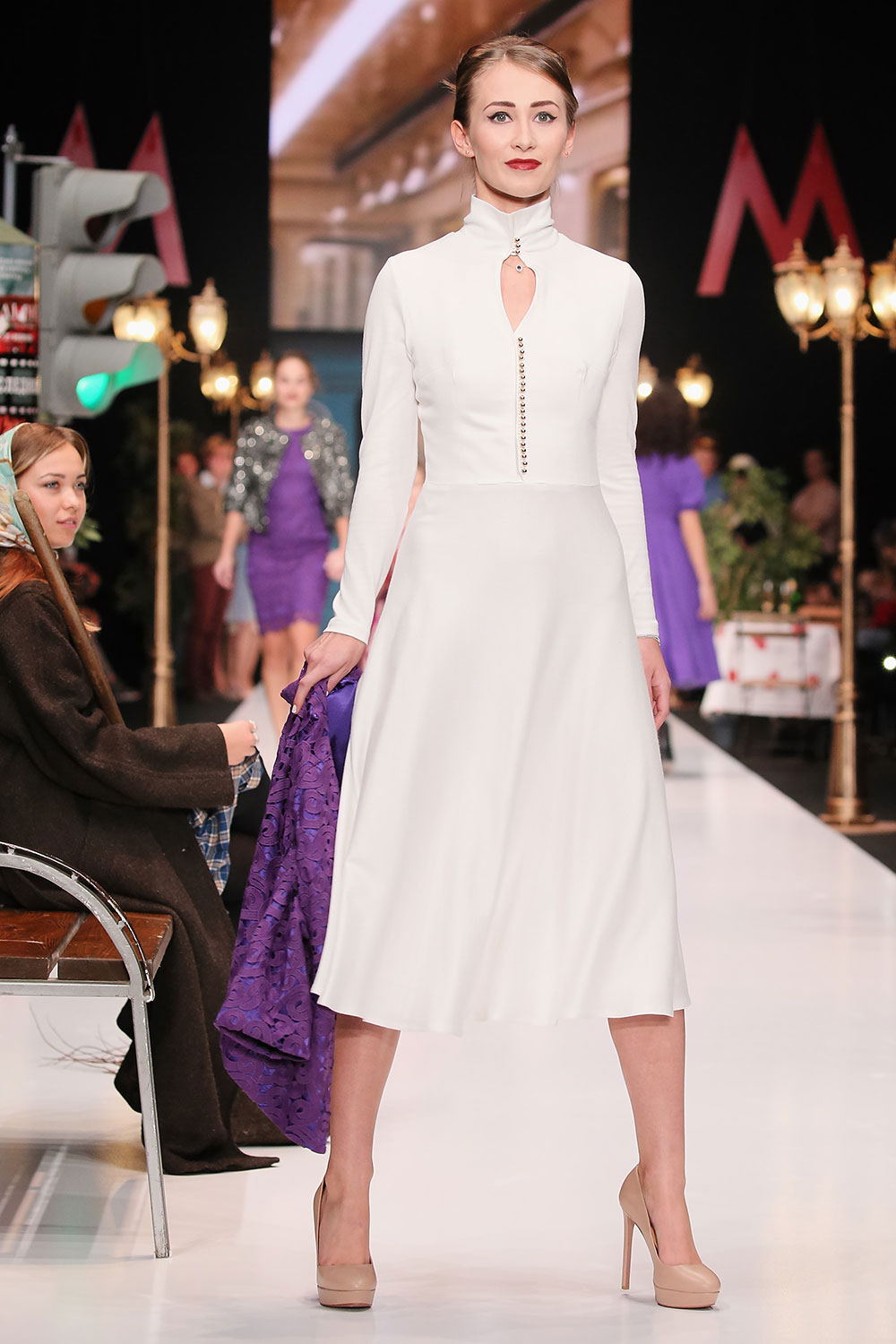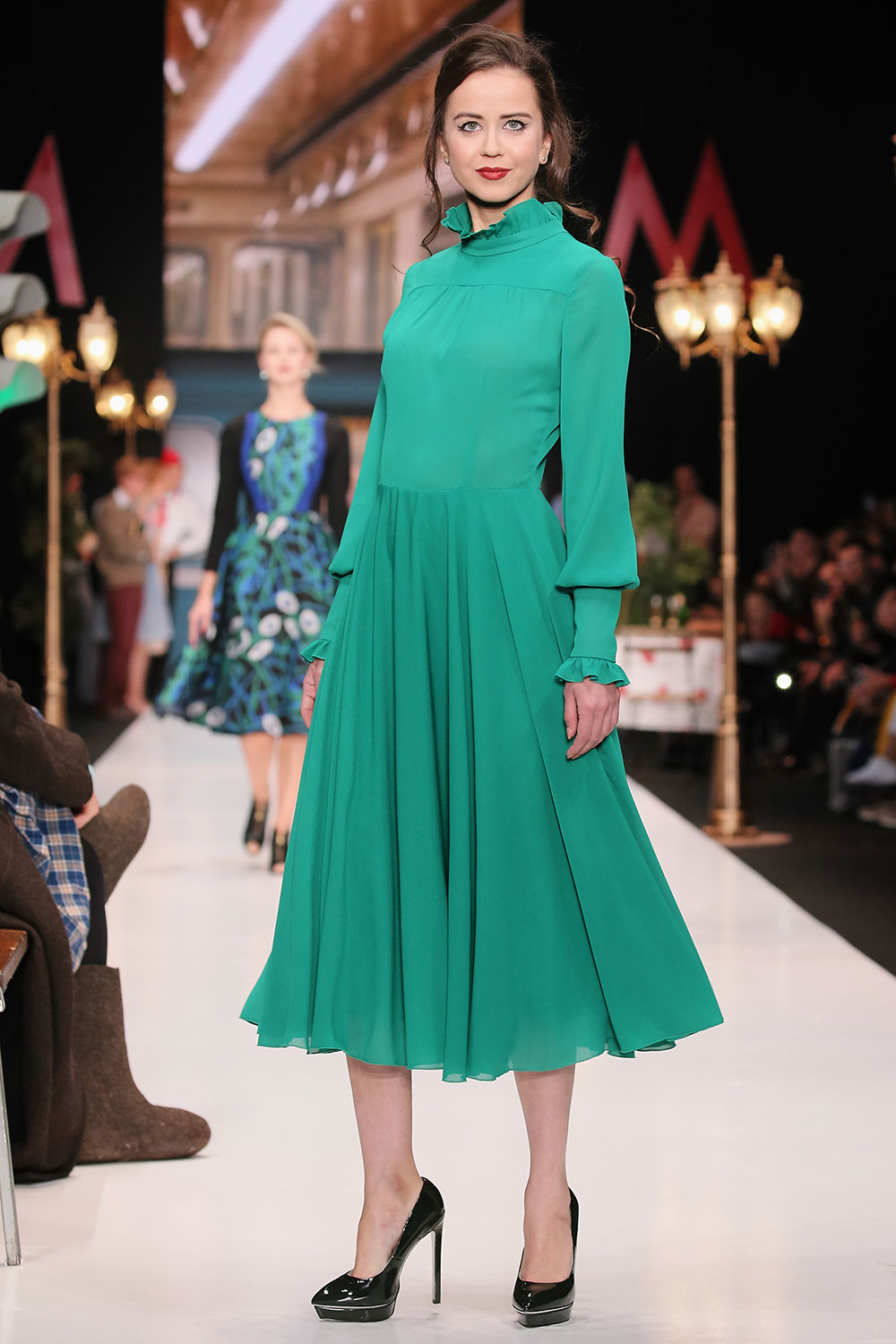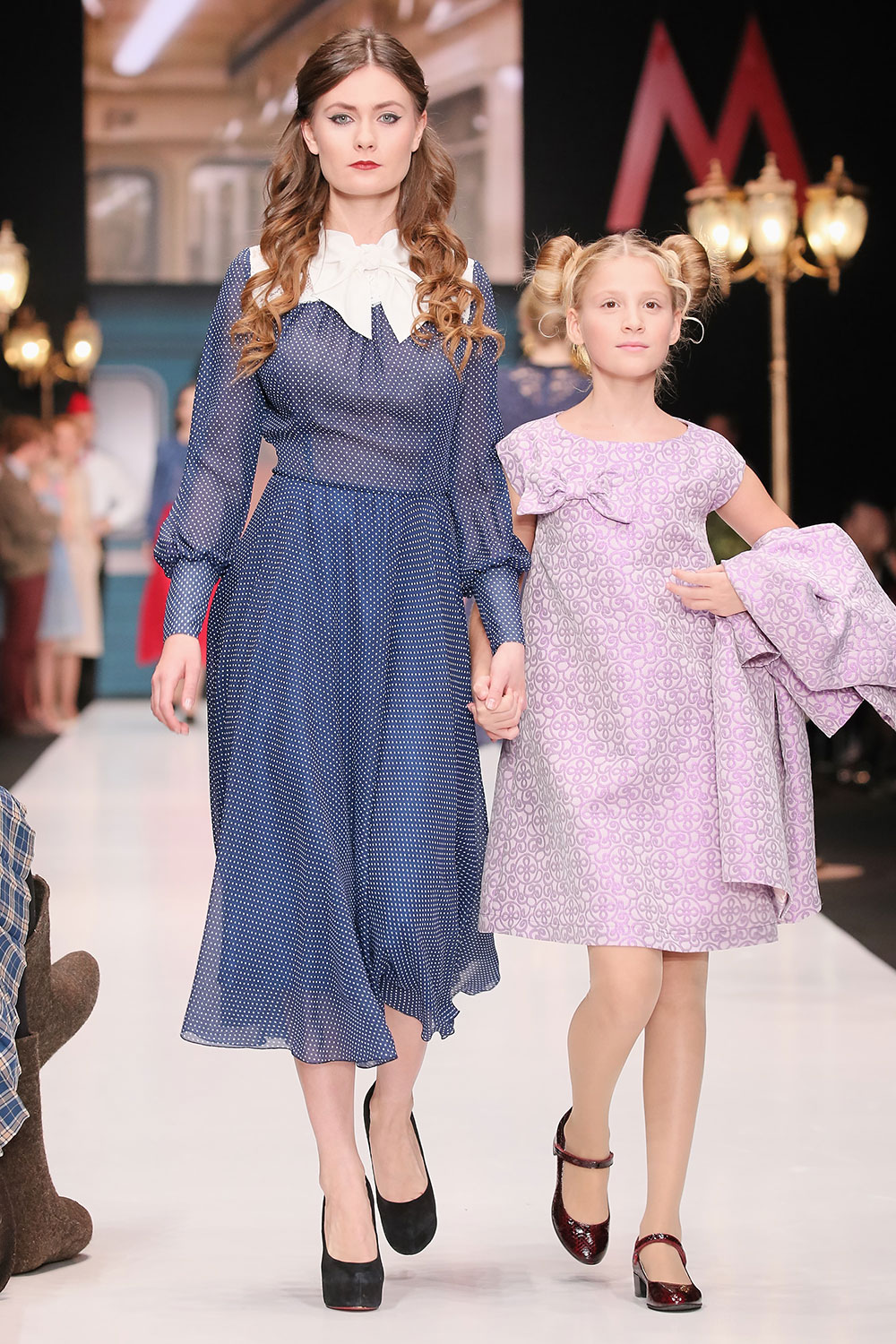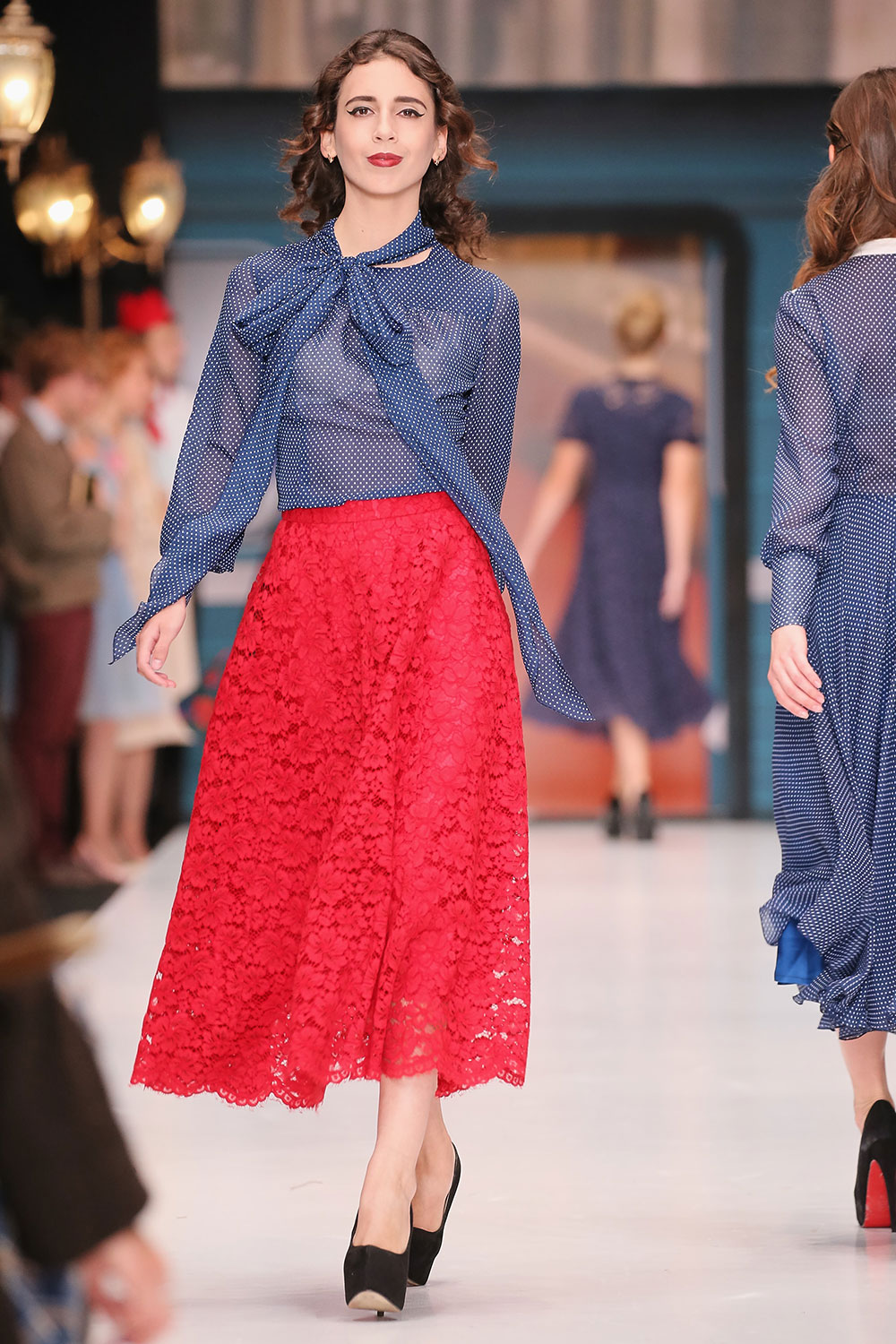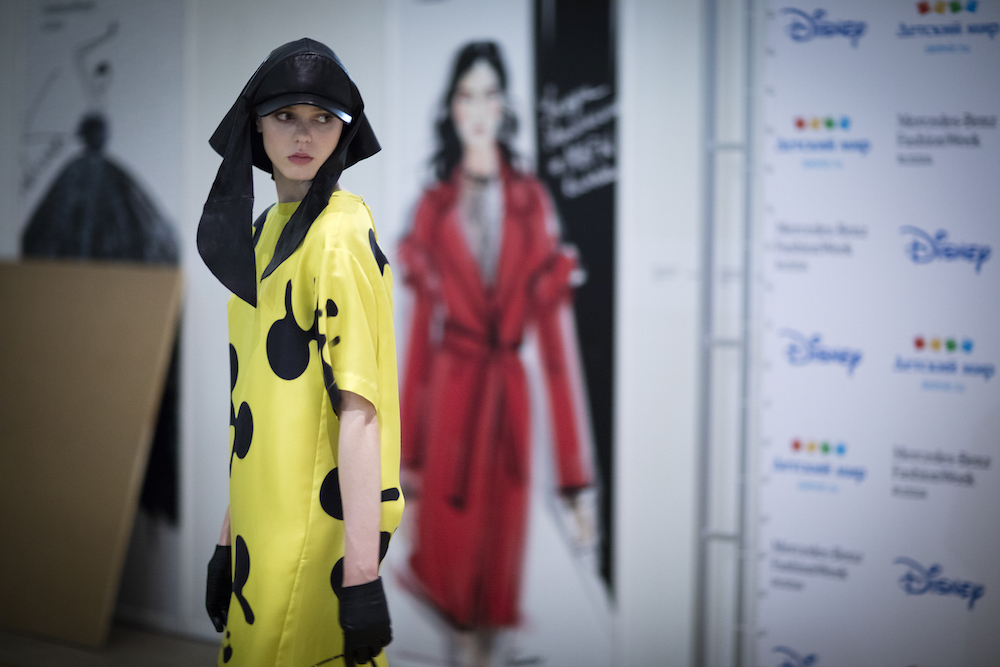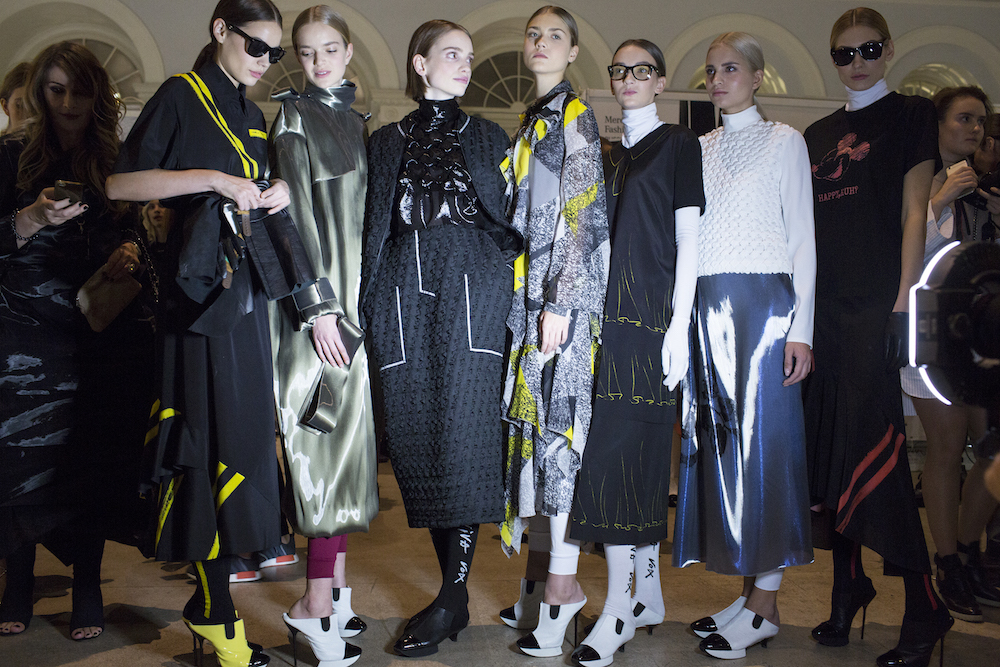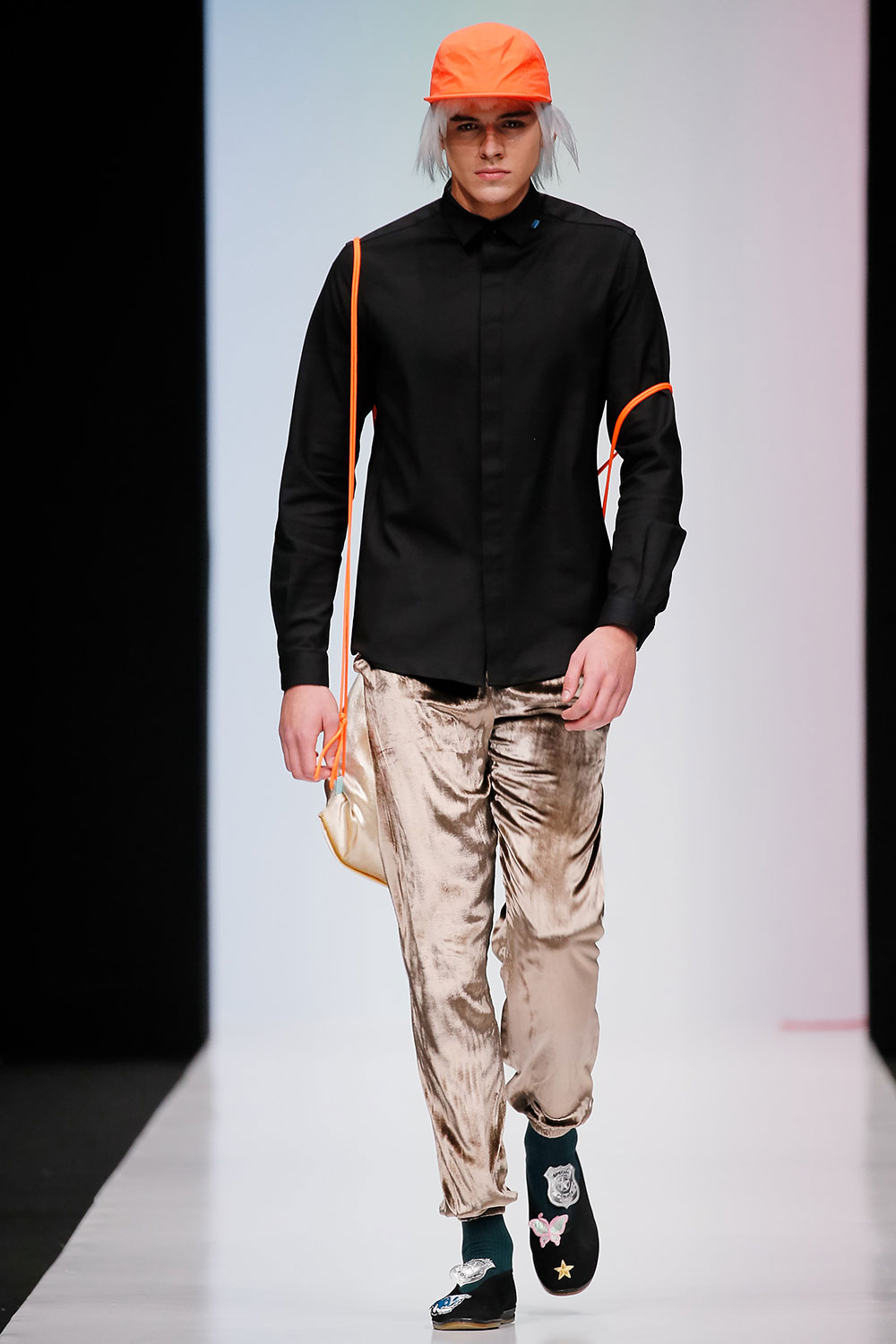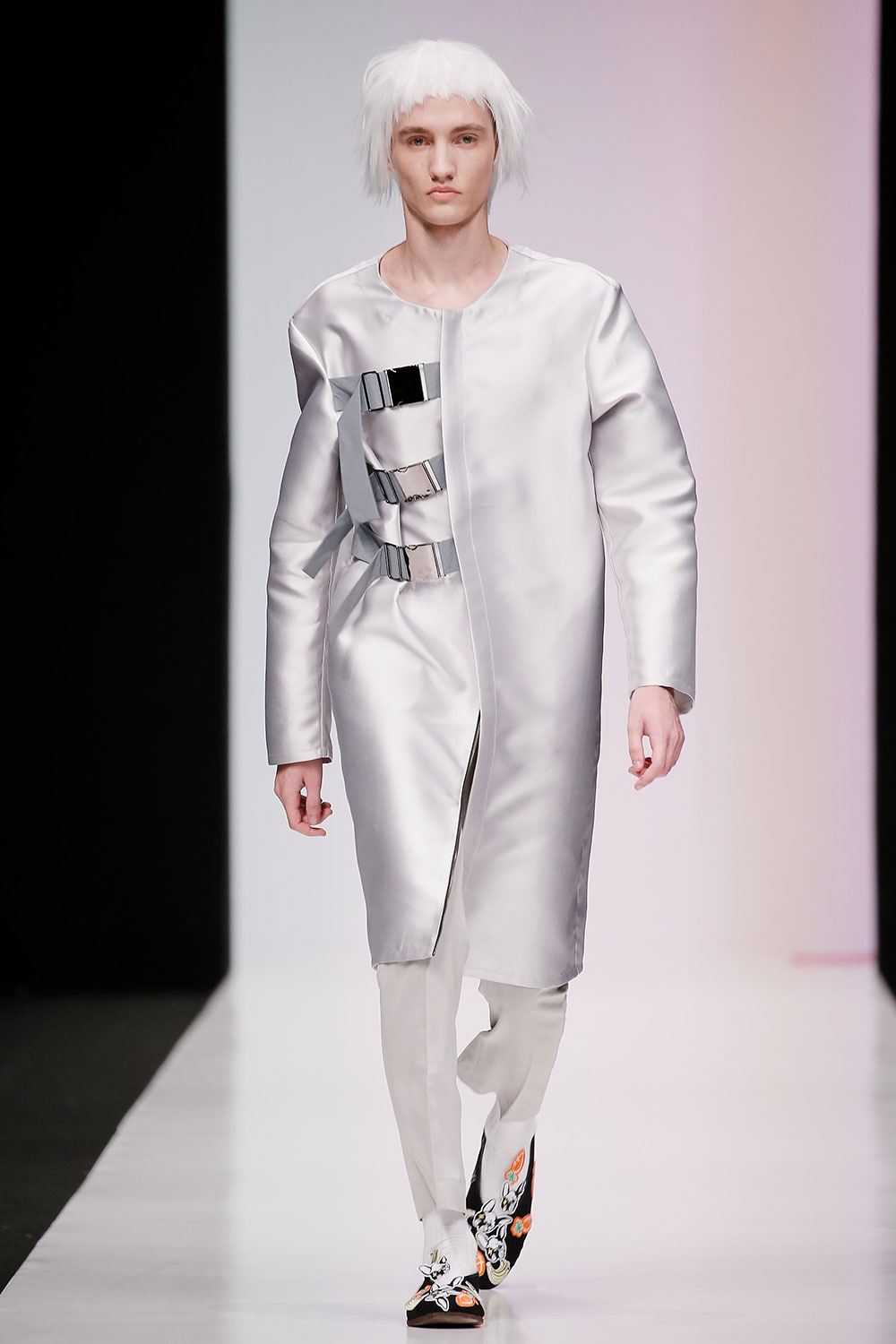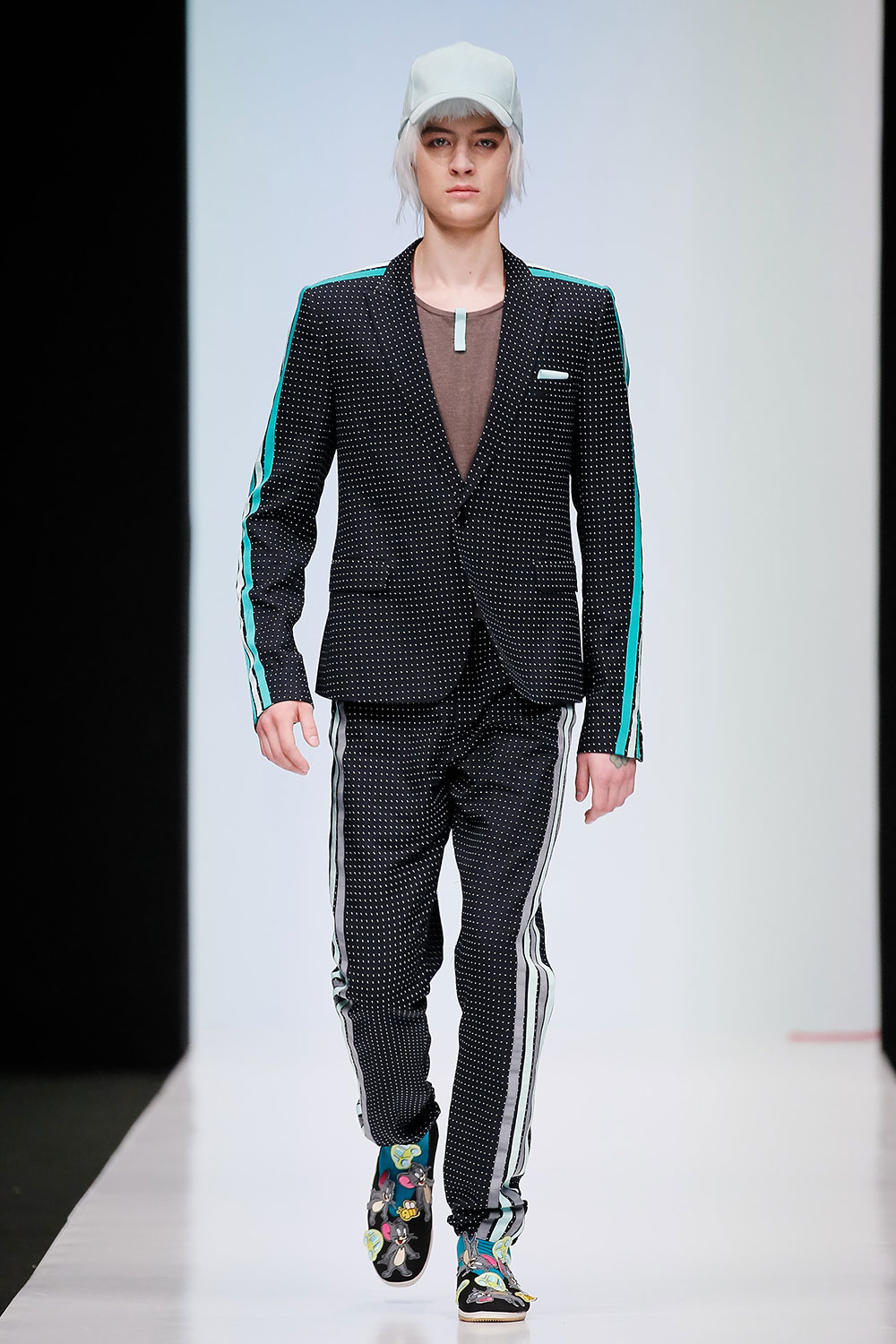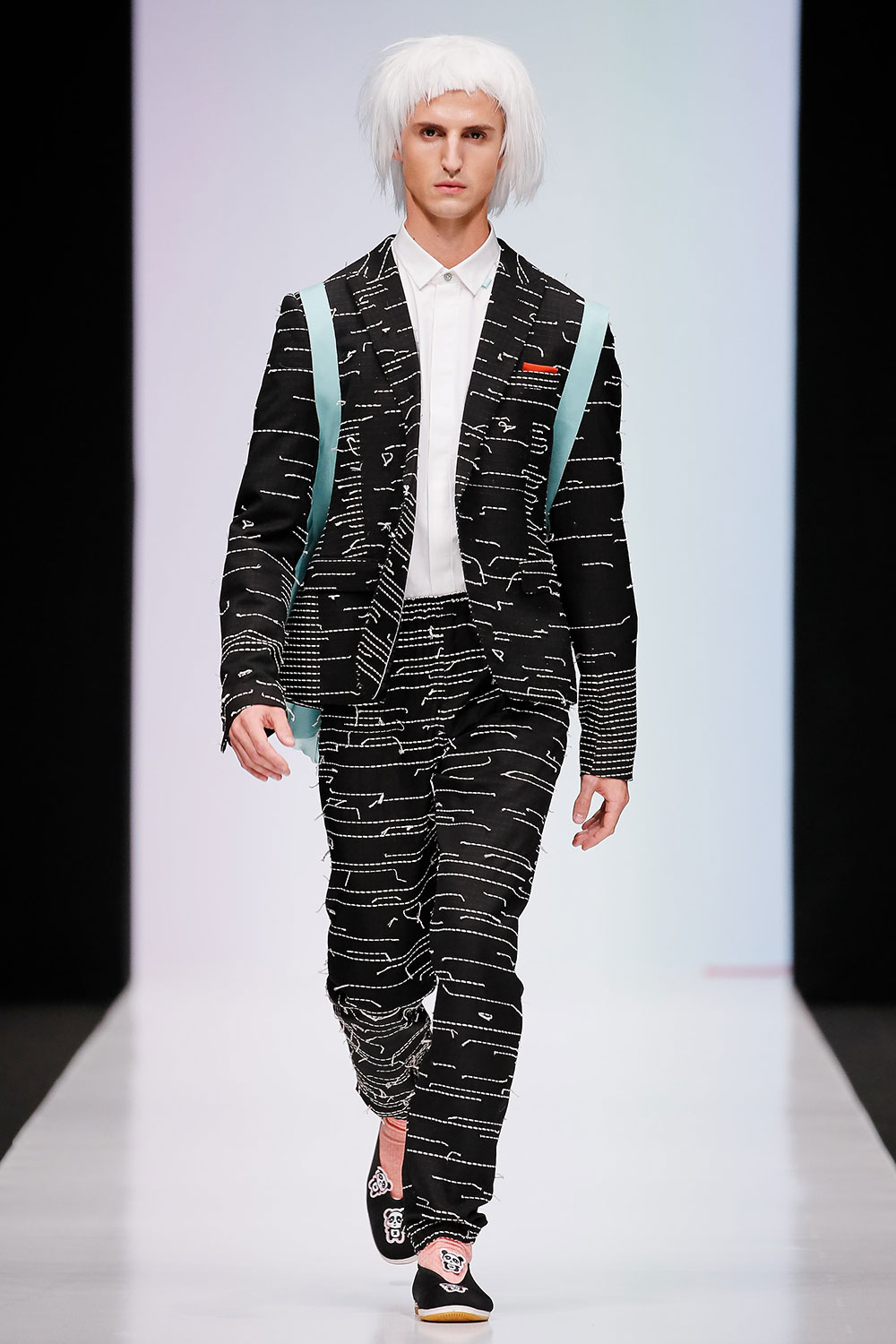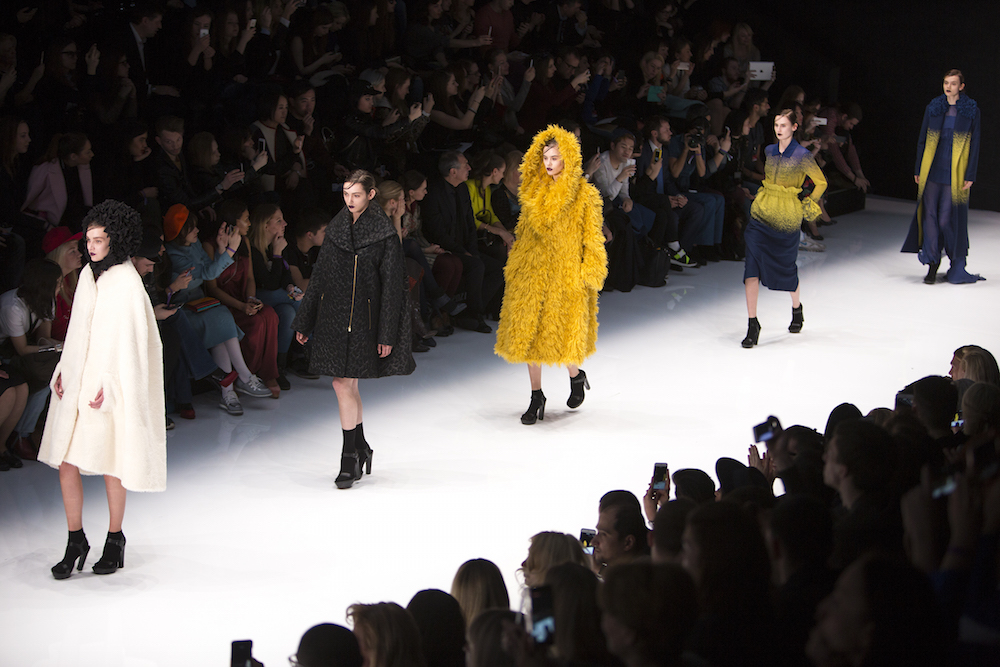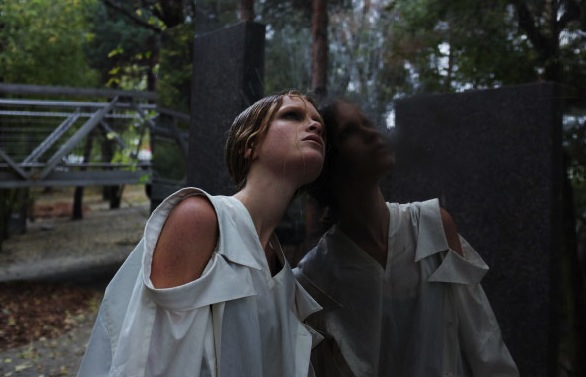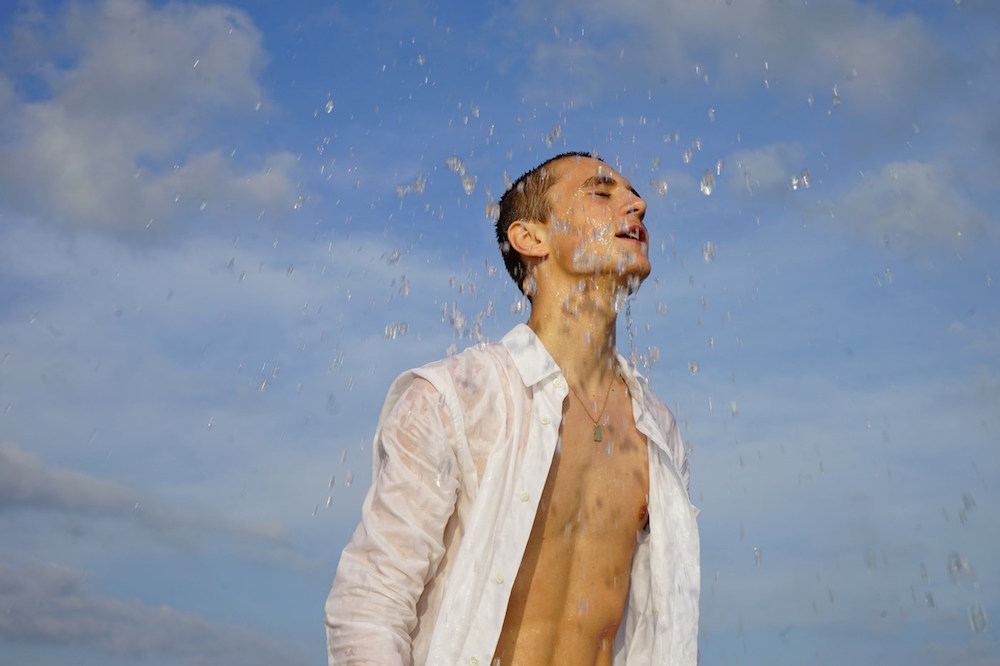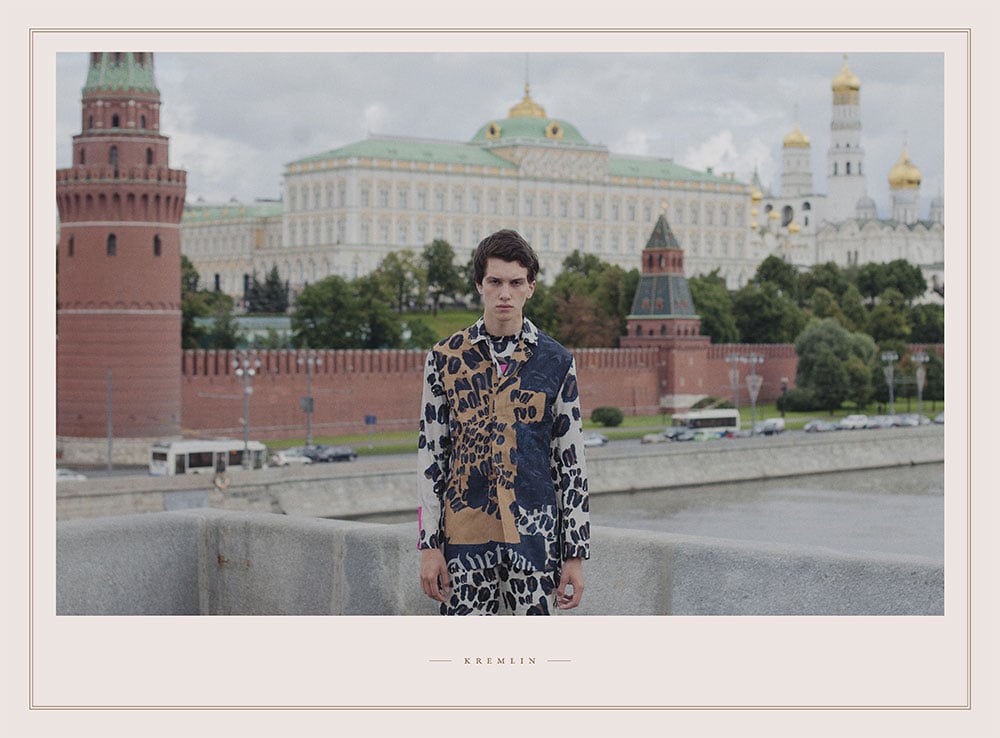Back to the future: a view from the front row at Moscow Fashion Week
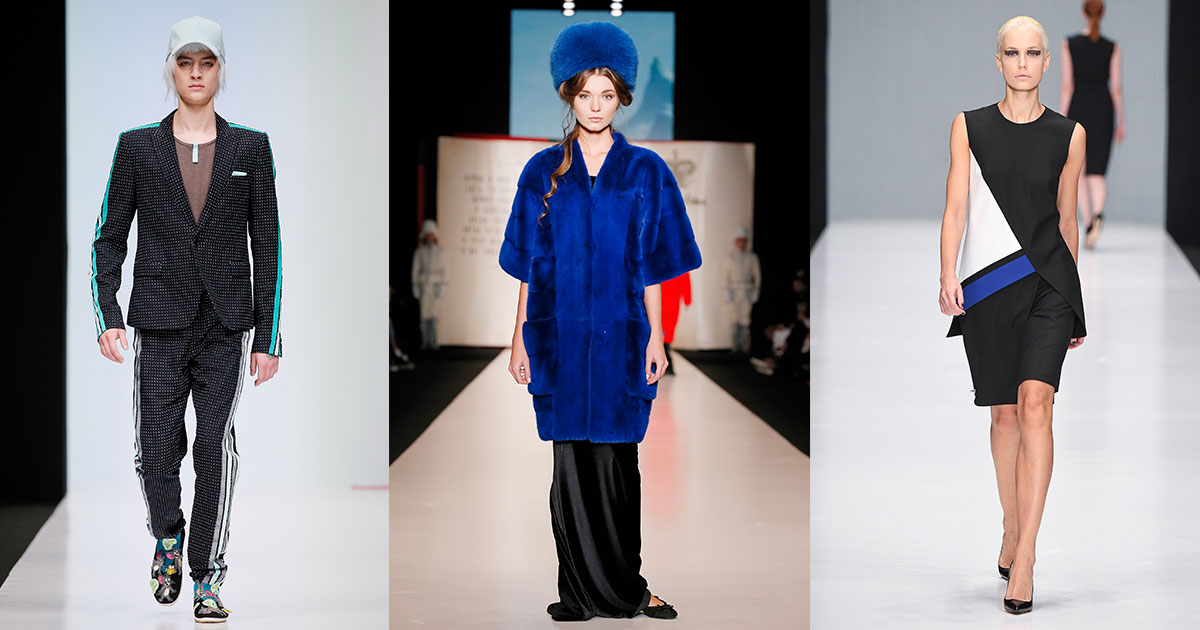
The designers at Moscow Fashion Week last month delved into the past for inspiration, drawing on everything from Russian folklore to Soviet sports and classic films. But what did that suggest about the future of Russian fashion?
The 33rd edition of Mercedes-Benz Fashion Week Russia promised not only a trip to the Russian capital, but an adventure in time. With “Back to the future” its theme, we were not entirely sure which direction this fashion week would take: what we embarked upon was a rich walk through a fluid past, and a reflection on how this past might shape Russian fashion futures.
In addition to a number of designers from elsewhere in the post-Soviet space, MBFW Russia is largely focused on local talent. As such, we were curious as to what would make this time-travelling journey specifically Russian. We didn’t have to wait too long to get an idea. The week began with its time-honoured opening by the “Red Dior” himself, Slava Zaitsev. 78-year-old Zaitsev, renowned as one of the only haute couture designers of the Soviet era, prefaced his show with a performance by the Russian Song vocal ensemble, clad in folk-inspired monochrome costumes, while his spring-summer 2017 collection also made use of traditional embroidery. Although greeted with standing ovations and abundant bouquets, this was not exactly the most forward-looking start – notwithstanding an unexpected finale featuring a model styled as somewhere between Russian snow maiden Snegurochka, Marie Antoinette and the corpse bride.
Both on and off the catwalk, folk arts held pride of place. Suspended above the key social area at the Manege exhibition hall on a mezzanine floor, in full view of those making crucial connections and clamouring to get into shows, stood the Russian Art Heritage Festival of Folk Crafts. Not only providing a range of interactive activities for guests – we have a terribly painted matryoshka to prove it — the fair served a future-facing purpose. MBFW Russia’s president, Alexander Shumsky, spoke enthusiastically of it as a space to encourage collaboration between craftsmen and designers, where a common “visual language” might be created. “The elements of folk designs may become a source of growth and a distinctive feature of our fashion,” said Dmitry Kolobov, a director within the Ministry of Industry and Trade. With the work of such big names as Alena Akhmadullina also employing folklore-inspired pieces to wow runway audiences, tradition seemed to be out in force.
We were wrong, however, if we imagined that a folk vision would be the guiding light on this journey, with traditional art and culture held up as the key to revitalising Russian fashion: the Golden Age of literature, Constructivism, Soviet cinema and sports all enjoyed centre stage.
Designer Julia Dilua not only validated our naive presumption that a Russian fashion week must, surely, involve fur, but transported the audience to a Tolstoyan high-society ball. Her models entered onto the catwalk from the pages of a huge copy of War and Peace, taking on characters from the novel and even engaging in a duel. Set to a mixture of Prokofiev and electronic music, Dilua’s show in many ways epitomised the idea of re-appropriating a moment or style of times past, and anchoring it in the present.
‘We are so in harmony with our roots’
In contrast to such opulence and theatricality, which is prioritised by many of its peers, Vassa & Co. privileges minimal details, bold character and a strong silhouette. Despite professing her love for New York, Muscovite Elena Vassa says she takes much of her inspiration from Russian Constructivism. “We are so in harmony with our roots,” she told us on a showroom visit. Indeed, her recent collections reference a number of early 20th century Russian artistic movements, which feed into the designer’s focus on the essential. The geometric shapes and lines of the dresses, jackets and skirts we saw elegantly carried down the catwalk echo the work of such geometric abstract artists as Kazimir Malevich. “The Black Square represents the essence of the universe,” explained the designer, referencing both Malevich’s iconic painting and the name of her brand’s previous collection.
Two designers to take us further into the Soviet era were Anika Kerimova and Artem Shumov. More precisely, Anika Kerimova allowed the audience to step inside the world of Soviet cinema in her Big City Life show. The designer projected clips from 60s and 70s classics including The Diamond Arm, Guest from the Future and Love Affair at Work. Her contemporary hook? As an Aeroflot tannoy announcement was overjoyed to tell us on the way over, 2016 has been dubbed “The Year of Cinema” in Russia. Moscow became almost another character in the theatrical presentation, with models stepping out from metro carriage doors and the ubiquitous “M” metro sign something of a centrepiece, while actors played out familiar scenes on and around the catwalk. In her use of iconic film clips and reenactment of filmic scenes, the designer created a kind of simulacrum – a mini Soviet-era Moscow using a pastiche of recognisable visual vocabulary. As her models strutted down the runway, clad in dresses, jumpsuits and twin-sets that seemed a contemporary echo of the outfits seen on screen and in the surrounding staged action, we were able to see the cinematic Soviet 60s and 70s projected into the present.
Fast forward a decade or so to the 1980s and Artem Shumov’s show. As a young Russian menswear designer exploring sport-chic style, comparisons to Gosha Rubchinskiy are par for the course. Shumov’s sports jackets, coats and signature jumpsuits are not rooted in the street style and post-Soviet look for which Rubchinskiy is known, however. The designer tells us that his 2017 Spring-Summer collection is anchored in athleticism and images of space travel, drawing on the Soviet Olympic team’s uniforms of the 1980s, and the popular obsession surrounding cosmonauts and space in this era.
These excursions into times past could conceivably have left us with an impression of a fashion industry lacking in originality, momentum and dynamism. If we had been surprised (and perhaps initially a tad disappointed) not to have been witness to an explosion of futuristic fashion, this was short-lived. During MBFW Russia we were invited to dip our toes in the waters of a rich history and discover how designers are making sense of this heritage today; in a week which saw a celebration of everything from literature to film and sport, and in which no particular era was eulogised above all others, we were able to get a glimpse of an exciting future shaped by, and in dialogue with, an equally exciting past.
